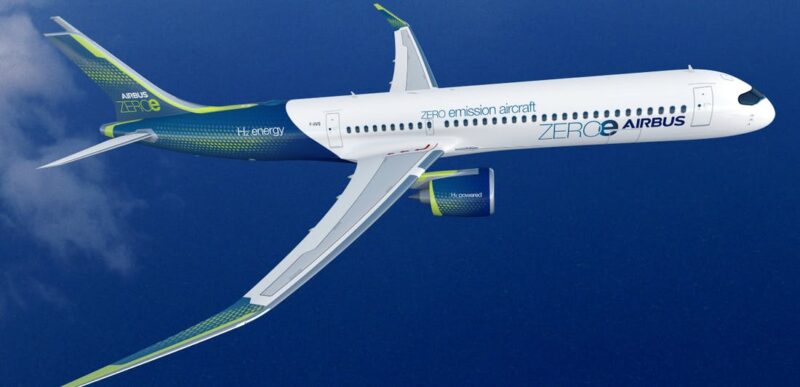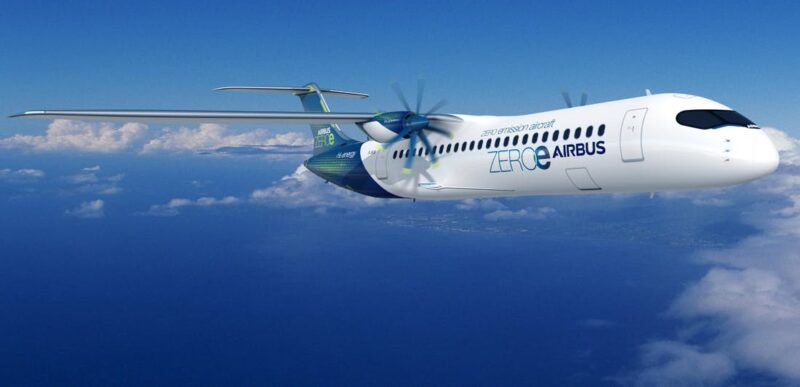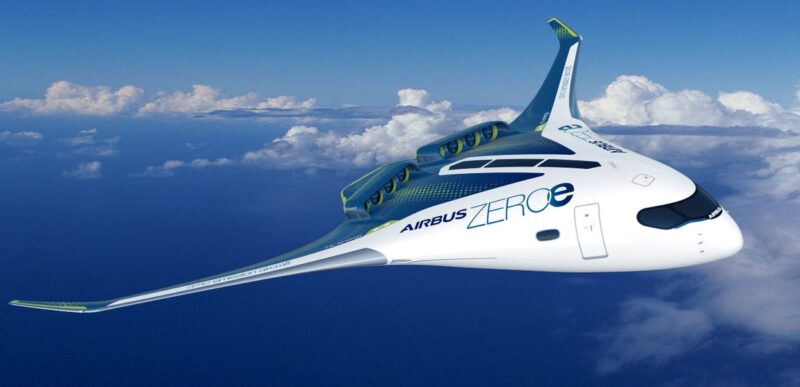Airbus has set itself the overarching goal of developing the world’s first zero-emission commercial aircraft. The aircraft manufacturer now presents three specific concepts for this purpose. They “each represent a different approach to achieving emission-free flight,” the group announced Monday, September 21. It goes without saying that the same technology will be applicable to private flights.
All of these concepts, called Zero E, rely on hydrogen as the primary source of energy. The European company calls it an “option that Airbus says holds great promise as a clean aircraft fuel.” CEO Guillaume Faury speaks of a “courageous vision for the future of emission-free flight” and “a historic moment for the commercial aviation industry”.
Three different concepts
The first concept is a 120 to 200 passenger aircraft that can travel 2,000 nautical miles or 3,700 kilometers and is powered by two turbojets modified to run on hydrogen (turbojets). Engines like these power nearly all civilian jets today – of course, they run on kerosene for fuel. The tanks for liquid hydrogen are located in the new Airbus Zero E aircraft behind the rear pressure bulkhead at the rear of the aircraft.
The second concept is a high-wing turboprop, whose engines will be modified to run on hydrogen instead of kerosene. It can accommodate up to 100 passengers and has a range of approximately 1,000 nautical miles or 1,850 kilometers.
Concept number three is a so-called mixed-wing body aircraft. It is a mixture of a conventional airplane and a flying wing in which the wings flow smoothly into the fuselage. This is an airplane powered by an electric motor, which will be fed by current supplied by fuel cells, powered by hydrogen, like that of some cars, for example the Toyota Mirai. Like the turbojet concept, it is expected to be able to travel around 3,700 kilometers and accommodate up to 200 passengers. The plane is windowless, instead there will be screens on which will be projected images of what could be seen outside if there were windows.
Airports must follow
“These concepts will help us research and develop the design of the world’s first climate-neutral, emissions-free commercial aircraft that we aim to bring into service by 2035,” said Faury. With the support of governments and industrial partners, the challenge of switching to hydrogen will be met. Airbus stresses that airports will also have to modify their hydrogen refueling infrastructure.
In June, France set itself the goal of developing hydrogen propulsion systems for helicopters and airplanes. Among other things, the government also demanded an emission-free car from Airbus in exchange for its aid. In July, the European Commission also adopted a hydrogen strategy designed to help make Europe climate neutral by 2050.





